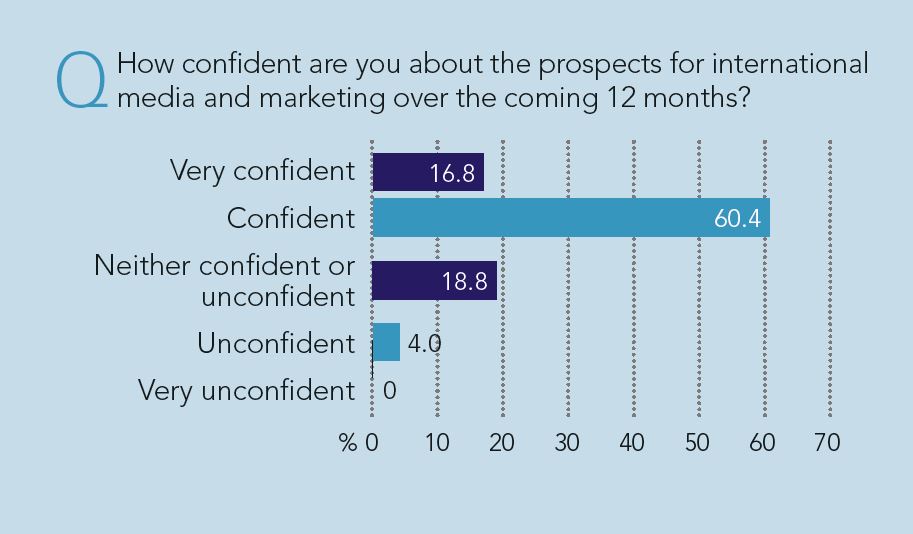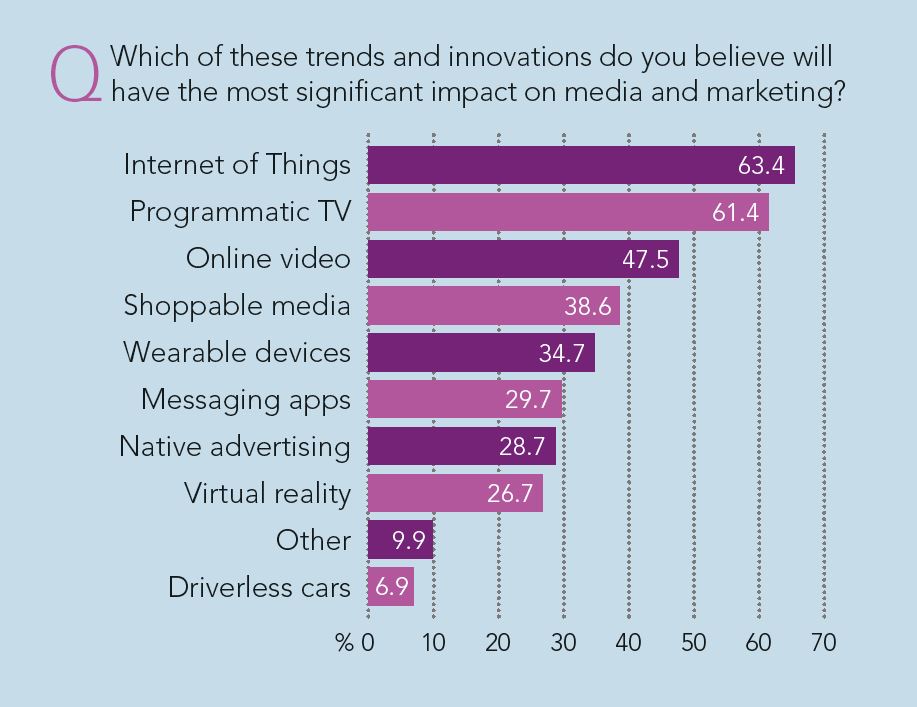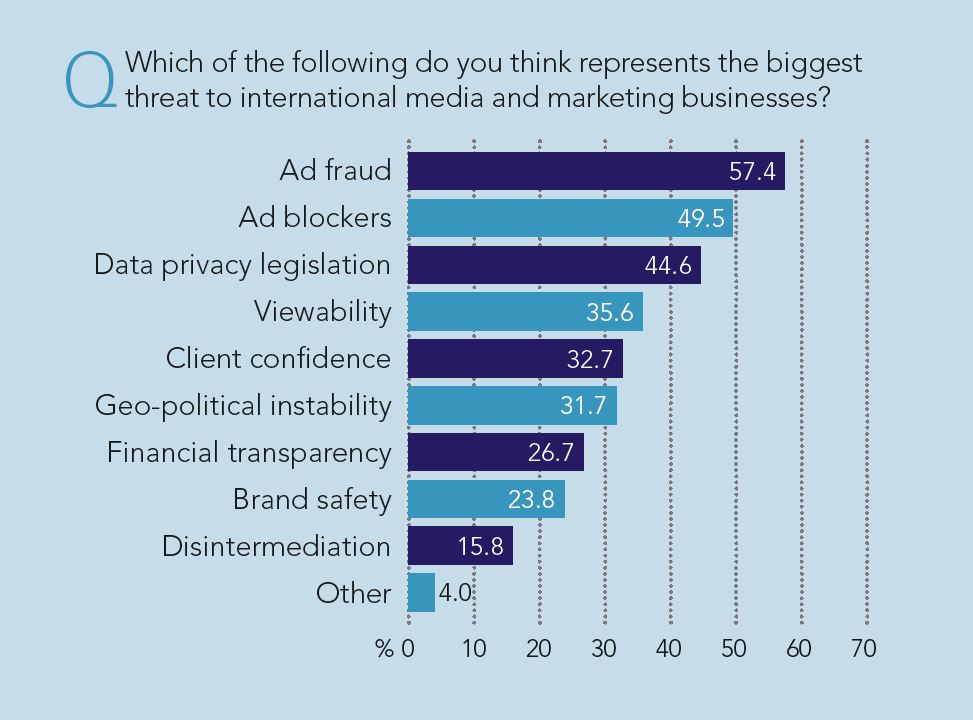M&M Global surveyed its readers to discover how international marketing and media professionals view topics such as talent, innovation, their careers and the future of the industry itself.
2015 proved another seismic year for the global marketing and media sectors. Google became Alphabet; live streaming apps such as Meerkat and Periscope appeared almost out of nowhere; AOL got bought by Verizon, and just as quickly snapped up Millennial Media; media agencies found themselves having to defend $30bn in global ad spend in the great ‘mediapolooza’; and the industry has been gripped by the rise of ad blockers.
We could go on, but we won’t, because – to borrow a favourite industry phrase – seismic is the new normal. The ground beneath advertisers, agencies and publishers’ feet is not so much moving as tearing itself apart and reforming at an alarming rate.
To better serve our readers at this time of unprecedented change, we decided it was high time to bring M&M Global up to date with a fresh brand identity and digital platform. We also wanted to reach out to M&M readers across the globe to find out what is driving their decisions.
In August, we surveyed more than 100 industry leaders from markets as diverse as Argentina, Australia, South Korea, France, the US and the United Arab Emirates, asking them what they consider to be the biggest opportunities and challenges in the industry, and who they believe to be the biggest influencers in international marketing and media.
Confident, ambitious and looking to the future: Meet M&M Global’s readers
Given the frantic pace of change, one may expect marketing and media professionals to show some trepidation about what lies around the corner.
Not so, according to our study. We asked, ‘How confident are you about the prospects for international media and marketing over the coming 12 months?’, and the response was overwhelmingly positive. Some 60% described themselves as ‘confident’, while a further 17% claimed they were ‘very confident’ about the year ahead. Only 4% suggested they were ‘unconfident’ – showing that the industry is adapting to marketing conditions with increasing swagger.
Our readers are also reasonably upbeat about the availability of talent, which has often been cited as a key inhibitor to growth. We asked respondents to describe the talent picture in their region, and though 22% said they felt a degree of ‘concern’, nearly three-quarters claimed that the availability of talent was either ‘acceptable’, ‘good’ or ‘abundant’.
An ability to innovate lies at the heart of any success in today’s media landscape. This year’s Cannes Lions festival was gripped by Sir Tim Berners-Lee’s talks on the potential of artificial intelligence, while technology giants such as Facebook, Microsoft and Samsung are in a race to conquer the nascent marketing for virtual and augmented reality products and services.
It is interesting to note, then, that despite the surge of interest in the activities of Chinese firms such as Alibaba, our study reveals that most marketing and media practitioners look to North America for the latest innovations.
When asked, ‘Which region do you believe is leading the way for innovation in media and marketing?’, nearly 38% of respondents named North America, surely in reference to the continued flood of businesses emerging from Silicon Valley. In second place was Europe (31%), while Asia Pacific came third, receiving 24% of the vote.
Media opportunities
So what do M&M Global readers believe are the innovations and trends set to revolutionise media and marketing? Respondents were allowed to choose as many options as they liked, and the most-selected innovation was the Internet of Things (IoT), with 63% believing that connected devices are going to make a significant impact.
Industry experts speaking to M&M Global earlier this year argued that the IoT dream of cars talking to thermostats and fridge-freezers making grocery purchases is not so far away, as long as technology companies, brands and agencies find a harmonious way of working together that places the consumer benefit at the heart of all they do.
“While we are starting to see some standards emerging around home automation, such as Z-Wave and ZigBee, consumers are still missing simple and intuitive ways in which all the connected devices within the home interact together seamlessly,” David Towers, EMEA digital partner and head of search at MEC Global Solutions, told us.
“Consumers are still missing simple and intuitive ways in which all the connected devices within the home interact together seamlessly”
In second place, behind IoT, 61% voted for programmatic TV. The ability to buy broadcast audiences in an automated fashion is certainly an alluring prospect, but it remained largely unfulfilled in 2015.
Several pilots were carried out over the past 12 months. AOL Platforms and Multi Channel Network launched a programmatic private marketplace for television in Australia and New Zealand, while Mondelez International teamed up with video ad-buying platform TubeMogul to roll out what it claimed to be the first programmatically purchased Super Bowl TV ad.
IPG Mediabrands’ insights unit Magna Global predicts that $10bn will be spent annually on programmatic TV in the US by the end of the decade, representing 17% of total TV ad budgets, so it has the potential to be a media gamechanger – just perhaps not in the coming year or so.
In comparison, online video – the third-most likely innovation to have a significant impact on media and marketing, according to our readers – is already changing brands’ marketing approach and commanding an ever-greater share of media budgets.
Amazon and Netflix have brought OTT services into the mainstream, Facebook is providing a genuine challenge to market leader YouTube, and Twitter, Instagram and Snapchat have all contributed to an explosion in video inventory.
Industry threats
Much has been said and written about the threat, perceived or otherwise, posed by the rising use of ad-blocking software. A recent study by Adobe and Pagefair claims that the number of people using ad blockers has risen by 41% year-on-year to 198 million. In September, concerns were raised even further by the news that Apple will allow adverts to be blocked by the iPhone and iPad versions of Safari.
Yet ad blocking was named only the second-most significant threat to media and marketing by our readers, with fewer than 50% selecting it.
The most significant obstacle, according to our study, is that posed by ad fraud. Advertisers have begun to wake up to the possibility that many of the ad impressions they buy will never be viewed by real people but, rather, by software ‘bots’.
“The average level of ad viewability has been roughly the same for years, so we’re not seeing much improvement in technical terms.”
The numbers are frightening: a study by Distil Networks released in October claimed that ad fraud is costing global advertisers $18.5bn annually – equating to $1 for every $3 spent on digital advertising. Brands are suddenly being forced to examine their processes with a fine-tooth comb, which in part perhaps explains the rush of media reviews we have seen in the past six months.
Alongside the debate around ad viewability – named the fourth-biggest threat by our readers, with 36% of the vote – it raises concerns that the benefits of using programmatic buying risk being overshadowed by the problems.
“Things are improving as people get more experienced, and we do see some very good examples of how this can work well. But the average level of ad viewability has been roughly the same for years, so we’re not seeing much improvement in technical terms,” Nick Manning, chief strategy officer at Ebiquity, told us in October.
“If programmatic is about showing the right ad to the right people, and nearly 70% of ads are basically being shown to the same people, I’m not entirely sure yet that there is as much true programmatic activity going on as we’re led to think,” he added.
Looking forward
Despite the aforementioned problems, international media and marketing professionals are, on the whole, looking to the future with ambition. Some 15% of respondents confessed they are motivated by a desire to leave the industry – something all companies should look to address with more progressive talent management and retention schemes.
However, over half (51%) are set to base their next career move on salary prospects, while 42% of those surveyed said they are looking to improve their promotion prospects.
The industry is becoming more globalised, too – nearly a third (32%) said they would like to work in a new market or region.
If 2015 was the year when the new challenges facing media and marketing organisations – from ad fraud and viewability to ad blockers and data privacy issues – were brought sharply into view, it was also proved that those working in the industry have the creativity and determination to build better business models for the future.
 The ground continues to move beneath its feet, but the industry is becoming more adept at navigating this undulating landscape, and will continue to do so over the coming 12 months – no matter what seismic shift may occur.
The ground continues to move beneath its feet, but the industry is becoming more adept at navigating this undulating landscape, and will continue to do so over the coming 12 months – no matter what seismic shift may occur.











